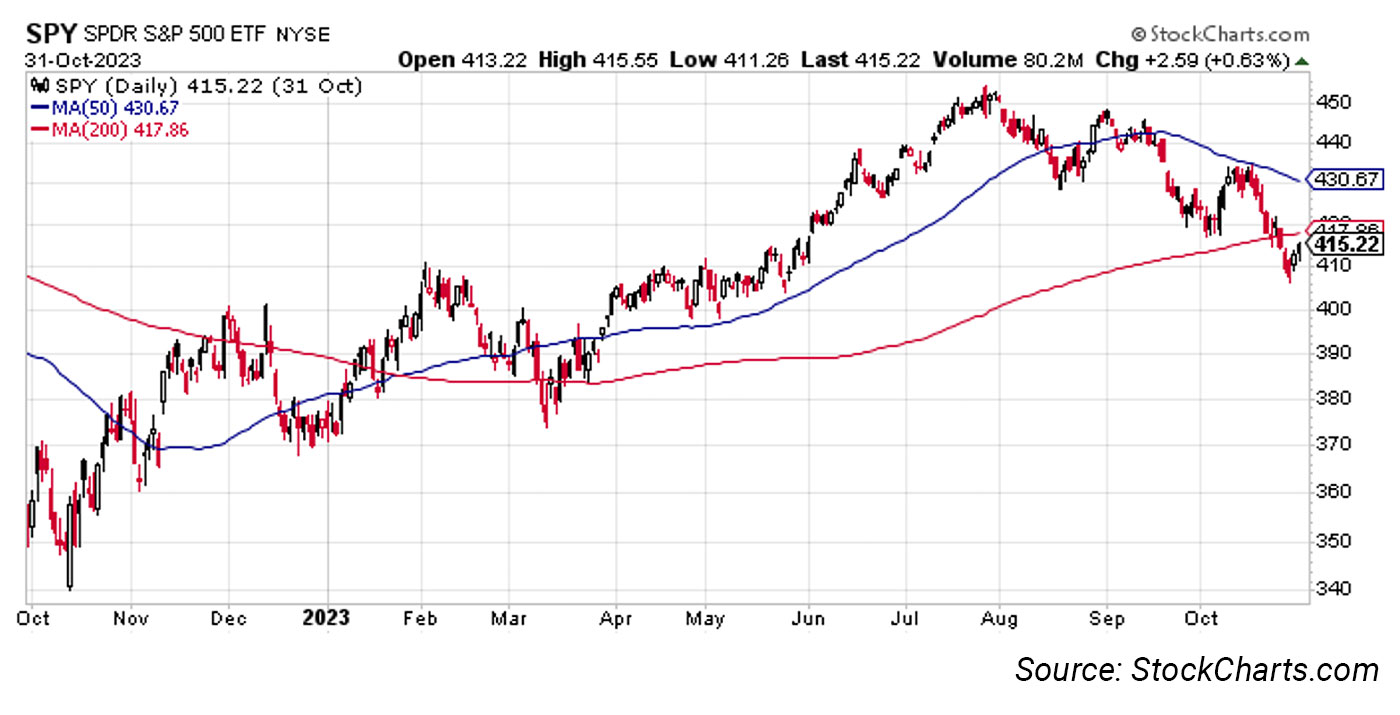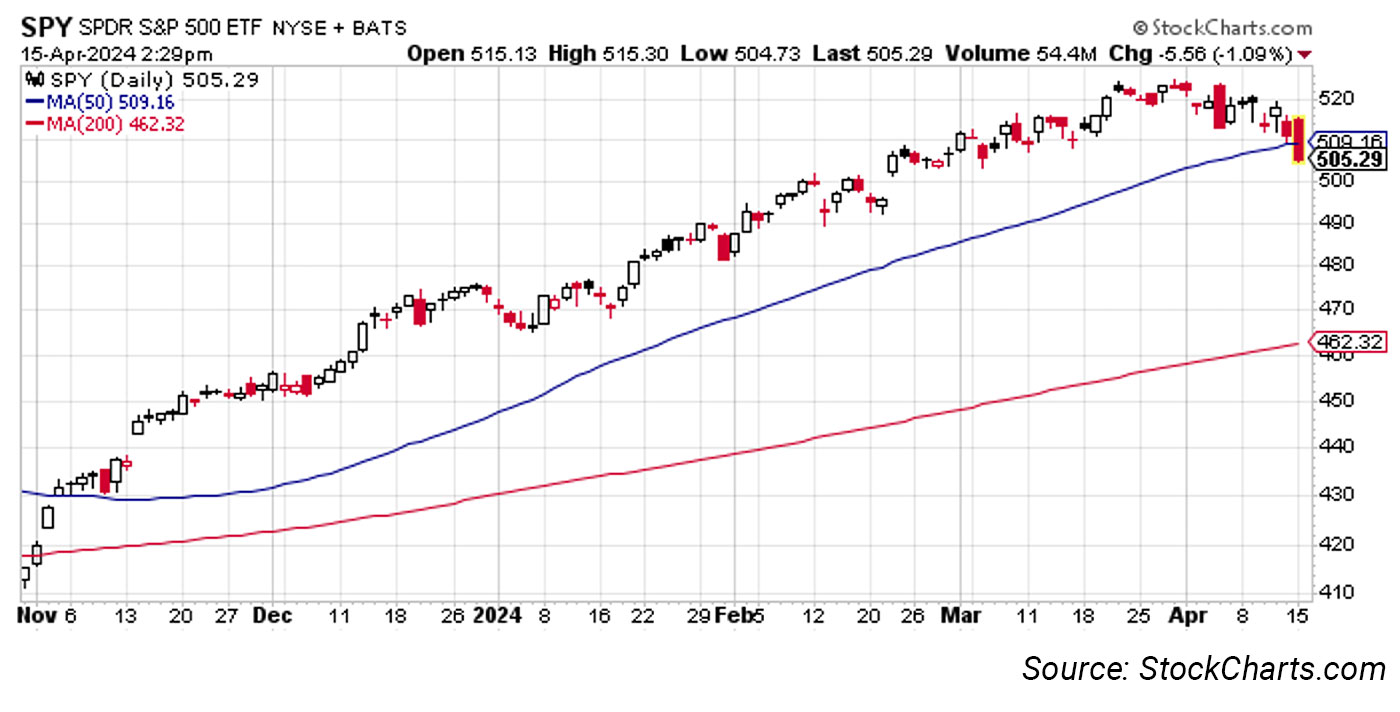
(Flexible Plan) One of my favorite quotes comes from Teddy Roosevelt’s “Citizenship in a Republic” speech, which he delivered at the Sorbonne in 1910. In it, he declared, “The credit belongs to the man who is actually in the arena … who at the best knows, in the end, the triumph of high achievement, and who at the worst, if he fails, at least fails while daring greatly. ...”
Like many other entrepreneurs, I was motivated to start my own business by that quote. The stirring words of the famous “Rough Rider” also inspired me in other parts of my life.
I was introduced to the advantages of investing at a very early age. On Saturday mornings in the early 1950s (when Saturday market trading hours still existed), my Uncle Kenny would take me with him to downtown Detroit to visit with his broker at the Detroit Stock Exchange, residing then in Detroit’s tallest structure, the Penobscot Building. We would leave there and then go fishing out on Lake St. Clair.
I don’t remember what we caught fishing, but I know I caught an investing fever during those visits to the Exchange that remains with me until today. I still remember the excitement of the Exchange. And I vividly recall the Art Deco relief of the bull battling the bear my uncle showed me. It once graced the entranceway to the Exchange’s prior home at 150 W. Jefferson Avenue and is now exhibited in a new building at that location.
As the relief made clear, in the arena (the stock market), the bulls and bears would fight it out. Even then, I realized there would be winners and losers in that battle. But to be the former, you first had to be “in the arena.” And if you were going to be in the stock market arena, you had to have a plan that dealt with both the bull and the bear markets, profiting from the triumphs in the arena and minimizing the effects of failures. That was the “Plan” in “Flexible Plan Investments” (FPI)!
Helping investors get back “in the arena”
Last fall, investors were still reeling from the one-two punch of a 30% pandemic crash in 2020 and a bond-market-inspired 30% downturn in 2022. They felt much as they had in the spring of 2009, after two 50%-plus declines in the S&P 500 in the first decade of this century. Many investors from both periods were beaten and battered by the market’s fluctuations and wanted nothing to do with stocks.
Their financial advisers could recite to them all the advantages of investing in stocks:
- Potential for high returns: Stocks have historically provided higher long-term returns than other investments such as bonds or savings accounts, making them valuable for building wealth.
- Liquidity: Stocks are highly liquid assets that can be quickly and easily bought or sold during market hours, offering investors flexibility and access to their funds.
- Diversification: Investing in a range of stocks across different sectors can spread risk and reduce the impact of any company’s or sector’s poor performance.
- Ownership in companies: Buying stocks gives investors a stake in a company, allowing them to share in its growth and profitability through capital gains and dividends.
- Inflation protection: Stocks are one of just a few asset classes that have historically allowed investors to avoid the loss in purchasing power occasioned by the economy’s persistent inflation.
Despite all of this education, most investors still avoided stocks. Yet between the stock market’s low in March 2009 and its high in February 2020, stocks soared 527.32%.
The losses investors faced in the three years leading up to last year’s fourth quarter were less grim than those they had experienced up until April 2009. But the stock market’s roller-coaster ride was daunting during both periods.

As last summer wore on, the market slipped lower. This followed a period of intermittent rallies from a 2022 low in early October. But then a sustained uptrend began in early March 2023 and continued until the first week of August, when the market experienced a pause.
In August, September, and October, the market peaked early each month, only to falter and relinquish those gains as stocks fell to new short-term lows at each month’s end. Putting new dollars into stocks was challenging as the leaves changed colors and investors met with their financial advisers in October last year.
The decision to invest was further complicated by the fact that investors were also tempted by the highest yields seen in more than 22 years last autumn.
Investors encountered advertisements for high-rate fixed-term annuities everywhere from their banks to their browsers. “Tie your money up in these vehicles while rates are high,” the ads screamed. To provide advisers and their clients with perspective, we published a white paper called “The hidden cost of fleeing from equities to CDs and fixed-rate annuities” (for financial professionals only), which presented our research showing the significant cost of such actions.
Throughout last summer, we met with groups of financial advisers from around the nation to discuss the 10 ways we could help them and their investor clients with real-world solutions to common investment problems. During these meetings, we spent a significant amount of time reviewing past market performance and prospects for the future.
I remember noting that in my 50-plus years of investing, I had rarely seen more indicators show that an explosion in stock market prices was on the near-term horizon. The market decline in October made clear that I was early in my prognostication.
In early November 2023, I again discussed the likelihood of an imminent market rally in my article “The 400-pound gorilla in the room.”
Did you see the 400-pound gorilla in the room back then?

Over five months have passed since then. Stocks, as represented by the S&P 500, rallied by more than 25% by the end of 2024’s first quarter.
Trent Schield, FPI’s vice president of national accounts, has been on a campaign this year. He told everyone who would listen that our mantra should be, “If you’re staying out, then you’re missing out!”
With over 20 years of experience in financial services, Trent comes from an investment management family. His dad, longtime money manager Marshall Schield, headed a registered investment advisory firm that was once our largest competitor in the active management business. Now, he is the chief market strategist at the Colorado tactical research firm STIR Research LLC. He and Trent co-authored the popular investment book “Dow 85,000! Aim Higher!”
Trent points out that more gains are likely in store for the popular equity indexes, given historical precedents. In the last couple of months, the S&P 500, NASDAQ Composite, NYSE average, Dow Jones Industrial Average, and the equally weighted S&P 500 have reached all-time market heights. Historically, when an index hits a new all-time high, it often experiences additional gains of more than 10% in the next 12 months. For example, the S&P 500 experienced its first all-time high since January 3, 2022, on January 18, 2024. History shows that in instances where the S&P had not reached a new high for at least a year, it subsequently gained an average of 14.03% in the following 12 months 93% of the time.
Similarly, history tells us that when markets persistently rise over an extended period, further gains are likely. On March 31, the S&P 500 completed its fifth consecutive month of gains, with an increase of over 25% during this period. Since 1941, similar patterns have led to an average additional gain of about 18% over the following year, with profits recorded after one year in every case.
I don’t mean to imply that the markets will only go up from here. On the contrary, in each of these instances, there were declines along the way to those gains. But history does report that, for the most part, those downturns were both brief and shallow.
Similarly, while several short-term indicators have generated warning signals over the last few weeks, market slippage was generally quick and relatively minor. This combination usually suggests an excellent time to “buy the dip.”
The yin and yang of investor fear
Investors are often motivated by two primary emotions: fear and greed. Fear can be viewed as the sole source of investor motivation on its own, which we can see by looking at investor fear through two different lenses:
1. Investors experience the fear of loss. The theory of loss aversion states that our fear of loss is twice as powerful as the euphoria we experience from an equal gain. When the markets fall, the price move is often quick and severe.
2. Investors also are attacked by the fear of missing out. It is from this fear that greed surfaces. Since bull markets generally last longer than bear markets, investors can argue that this fear is more persistent than the fear of loss. It lasts longer, as it drives prices higher.
Which emotion wins?
Long ago, market technicians identified a method to determine which of the two emotions—fear of loss or fear of missing out—is driving the market: trend following, or momentum investing. When the trend is up and momentum is positive, the fear of missing out drives investors to increase their investments. Conversely, when the trend is down and the momentum is negative, the fear of loss causes investors to shun stocks, stop buying, or retreat to more defensive asset classes.
Trend-following strategies invest when the fear of missing out drives investors into an asset class. When the measure suggests that fear of loss is the predominant investor motivator, the strategy moves them into cash or defensive asset classes.
Most FPI strategies and sub-advised mutual funds use this simple measure. Those that apply the concept most aggressively tend to be among our better performers when the market soars, as it has over the last five months. Our top-performing QFC Multi-Strategy Explore strategy, Equity Trends, blends these trend-following momentum strategies.
Since 1998, we have offered portfolios composed of multiple investment strategies. Why? Because different investment strategies, even different momentum strategies, perform differently in different market environments—such as bull, bear, and sideways markets. For example, buy-and-hold investing tends to perform well in only one environment—bull markets. Trend-following strategies tend to outperform in bull and bear environments but perform less well in sideways markets. No investment strategy is profitable all of the time.
Building a portfolio for all arenas
I don’t believe Teddy Roosevelt thought his “man in the arena” was meant to exist within only one arena. The former president’s life argues otherwise. He was a soldier, a biologist, a botanist, an environmentalist, a patron of the arts, an author, a crusader for civil and women’s rights, and one of our greatest presidents. His “man in the arena”—like our QFC Multi-Strategy Portfolios—would have sought to perform well in many arenas.
However, as President Roosevelt elegantly said, to have the opportunity to perform well, one first needs to enter the arena.
In the current market environment, if you’re staying out, you’re missing out.



